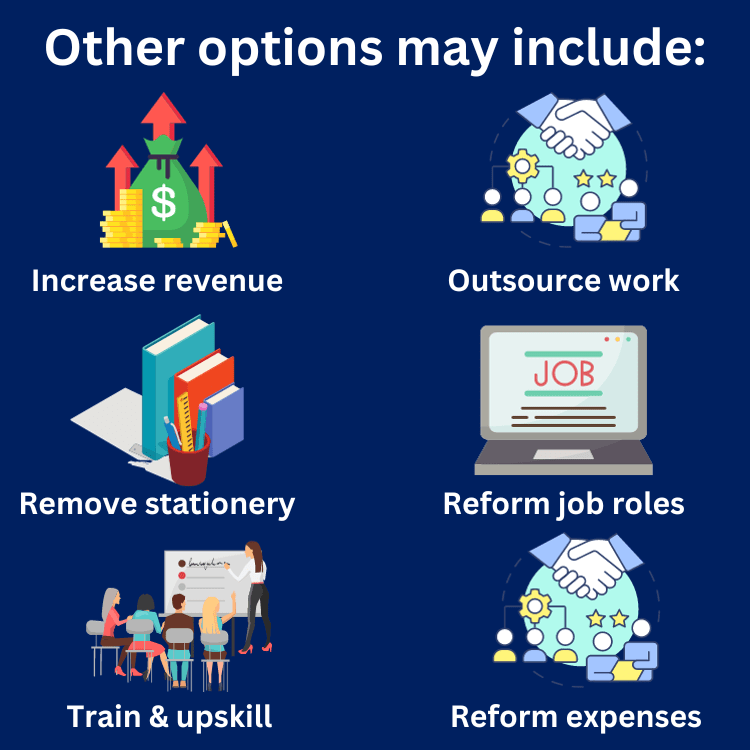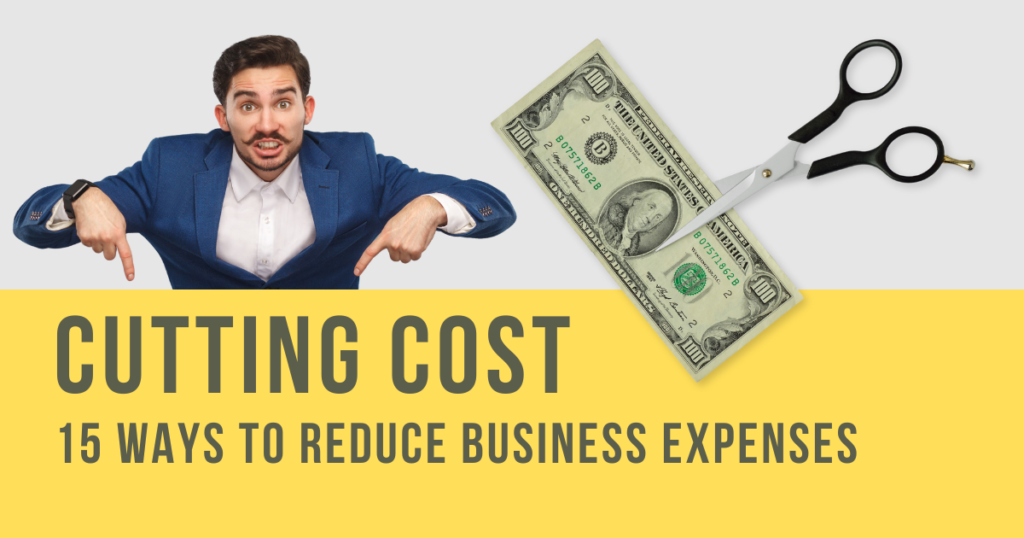Table of Contents
Finding ways to reduce business costs and keep them lower, for longer, is a really important activity businesses are increasingly doing on a regular basis, most commonly, annually. As organizations evolve, develop and grow, they will continue to take on new costs, increasing the size of their budgets evermore. As well as new spending, current spending also continues to climb, taking more and more of current resources. In good times, this isn’t as much of a problem as it could otherwise be, as there is plenty of money to absorb such costs. However, in bad economic times, such additional spending can lead to deficits and an increased perception that some of the spending is wasteful. In these times, companies react to find ways to reduce business costs immediately or reduce business costs over the longer term.
Today, however, many organizations are doing this type of work, even in the good times. They are not waiting for economic conditions to worsen before they take better care with their spending. They want to find ways to reduce business costs in some areas now, to either bank for a rainy day or reinvest into more value adding spending for the benefits of tomorrow. These activities include:
- Reviewing your budgeted spend vs. actual spending. Try and spot those budgets which consistently go above the spending limits imposed on them.
- Try to spot trends in the spending. Where money is being over or underspent, try and identify why this is happening. Is there a fault with how budgets are being set? Are there one off circumstances?
- Shift priorities to that which is more value adding. If you are finding a budget very much under pressure, or one with some capacity, identify current or new spending which should be focused on more, that which will give you a greater return on investment. Are there opportunities to reduce business costs here?
If you find yourself in a position where you want to reduce business costs, however, here are 10 ways to do just that.
Option 1: Review open job vacancies
One of the first activities you can do to reduce business costs is to review all vacancies currently LIVE in the business to understand whether or not these vacancies are truly needed. When times are deemed “good” and there is cash to spare, many departments will put additional new roles into their budgeted spend for the year ahead, often without question. You need to review all of these roles, revisit the business cases put forward and assess current capacity and needs. Are these roles truly needed and are a value add to the business, or are there alternative ways to get this work completed?
Option 2: Freeze hiring…for now
Freezing any new hiring outside of what is deemed as “essential hiring” is good way to control spending in the immediate period. If there were plans for new spending, or if the budget had allowed for the potential of this, freezing this from happening can give your organization breathing space to bank this money for now. The money can also be reallocated to more pressing spending needs if that is the reasoning behind the review on spending – this will depend on your motivations to reduce business costs.
Option 3: Review the potential for an offshore location
If you are thinking about your spending commitments and how to reduce business costs from a longer term perspective, you may want to consider if setting up an offshore location would be a good option for you. Offshore locations can help you to reduce spending on your onshore workforce quite substantially, whilst also giving you greater global coverage from a time zone perspective. This location could take on some of the work deemed “less value adding” for onshore workers, but given the cost ratios offshore, a new location could be deemed fit to conduct such activities.
Option 4: Automation of business processes
Although with automation there are up front and running costs to consider, the longer term benefits from a cost saving perspective are present. You would want to approach this choice if you are considering your longer term financial health. Automating large, end to end business processes, can enable you to free up resource to focus on more value adding activities. As your automation journey continues, you will find yourself in a position not needing to hire as many people in the future, due to the ripple effects of the automated processes. Equally, an organization that gets so good at defining and delivering their automation needs will often look to automated solutions first before thinking about hiring – this will help reduce business costs over the longer term.
Option 5: Go completely remote
If you have not done so already, shifting your workforce to a fully remote model could be an option. This will help remove all office costs, and the associated costs that come with this. Fully remote roles could also offer slightly lower salaries and benefits as you can take into account there is no need for your employees to travel, and therefore transport costs and season ticket benefits will no longer exist for them. If fully remote is too extreme for your business, you could opt for a more official hybrid model which sees you reducing your official office costs and moving to a coworking or more informal contract approach.
Option 6: Change policies around “additional” spending
This additional spending could include travelling to various offices or going “on-site”. Meeting clients face to face rather than over video conferencing. Reducing or removing the need for international travel. Not hosting any team away days or gatherings. It could sound drastic to remove all of these spending items, but you could approach this in various ways. You could tighten up on this spending, so whilst it isn’t completely removed, it is vastly reduced. Equally, you could change the policies surrounding them to discourage people to budget for such spending which will in turn reduce business costs instantly and longer term.
Option 7: Find alternative providers
Another way for you to reduce business costs is to task your Procurement Department to source new providers for a range of services and systems you are currently utilizing. Many organizations will continue to use the same systems or services that have been provided to them for many years, simply because it is what they have always done. This can lead to additional costs being added on, and new alternative options not being considered. To ensure the success of this work, you can tasks your Procurement Department with specific targets they need to achieve. Currently we spend X on X service, we need you to get the same service for 20% less, for example.
Option 8: Merge systems / find do it all alternatives
As a way to reduce business costs on the technologies / systems in your business, conduct a review of what the offering currently looks like. How many systems do you currently have? How many of these talk to one another, and how many don’t? Go to the market to understand what options are out there that can provide all of the services you currently receive (and maybe more) across a range of systems. It’ll often be the case that the one system that can do it all will be far cheaper than running multiple systems. Equally, not having to build integrations will save additional spending, and removing the manual work surrounding moving data and information across multiple systems will save a lot of time waste.

Option 9: Review 3rd party / Partner contracts
As with the provision of systems and technologies, many organizations also pay little attention to the contracts they have agreed with their partners. These partners can be providing a range of services, such as Facilities, market data and information, HR or Payroll provisions, office equipment etc. These costs can, overtime, increase, especially when it comes to renewing a contract. All contracts should be reviewed a year ahead of renegotiation to see if they are still good value for money and, if not, it is time to go to the market. Equally, revisit the type of contractual agreement you want to enter into. You can offer standard contracts, flexible contracts, reward based contracts etc. If looking to reduce business costs, this approach will enable you to start finding savings within a year and then, longer term.
Option 10: Reduce errors
The reduction of errors across the business can also increase your ability to reduce business costs. For example, if you find you are having to budget additional spending for the loss or damage of laptops, phones, tablets etc. launch a project to understand why such errors are occurring and establish what you can do to reduce these. Equally, with customers, try and understand why they are complaining about certain products and services, why they are sending products back, and seek to reduce these rates down to much lower levels. If you build a laser focus on these efforts, you’ll be surprised how much lower you can get these rates.
Also read: Cutting Cost: 15 ways to reduce business expenses
Conclusion
As you have seen, there are many different and diverse ways to reduce business costs. It is important that such efforts are not simply done on a timed basis (annually), but actually you keep an eye on spending on a regular basis. Spending should not spiral out of control during the good times only for it to be snapped back during the bad. It should be controlled at all times, with the same messaging around this embedded across the organization (to try and avoid certain departments acting like there is a bottomless pit of money vs. other departments who end up spending so little it actually hinders their operational performance). Review, reform and remember – the 3 Rs in place to help you reduce business costs.







